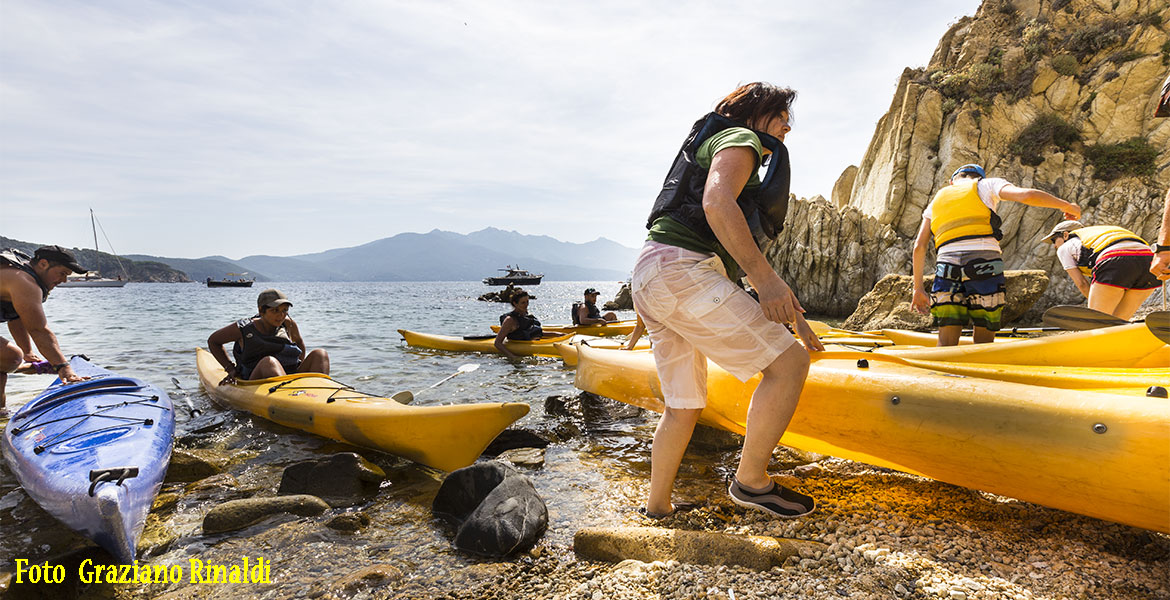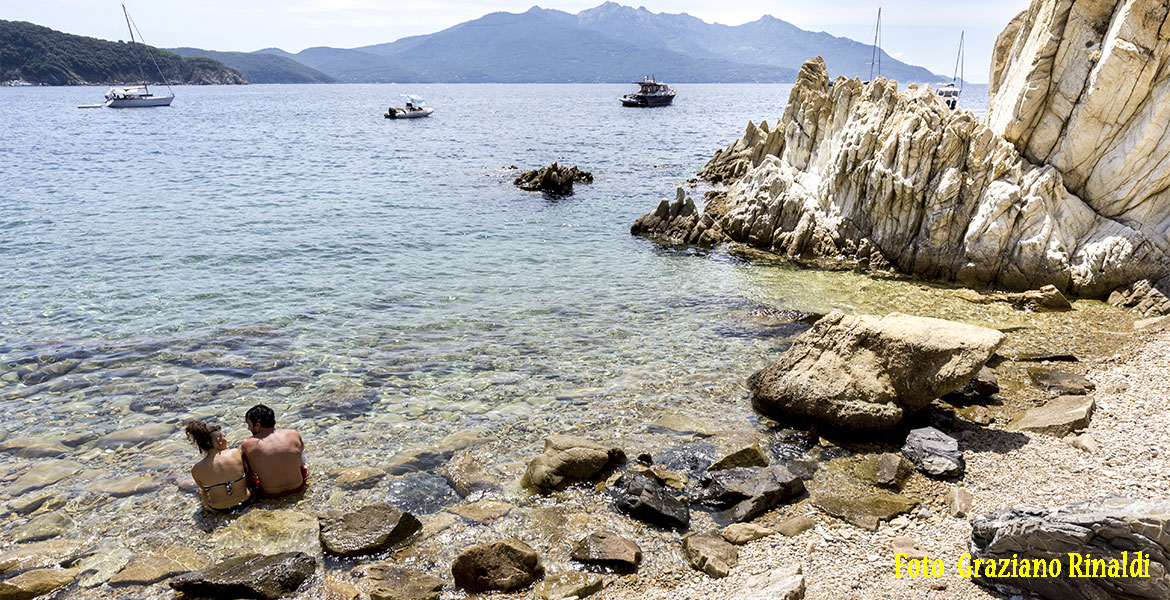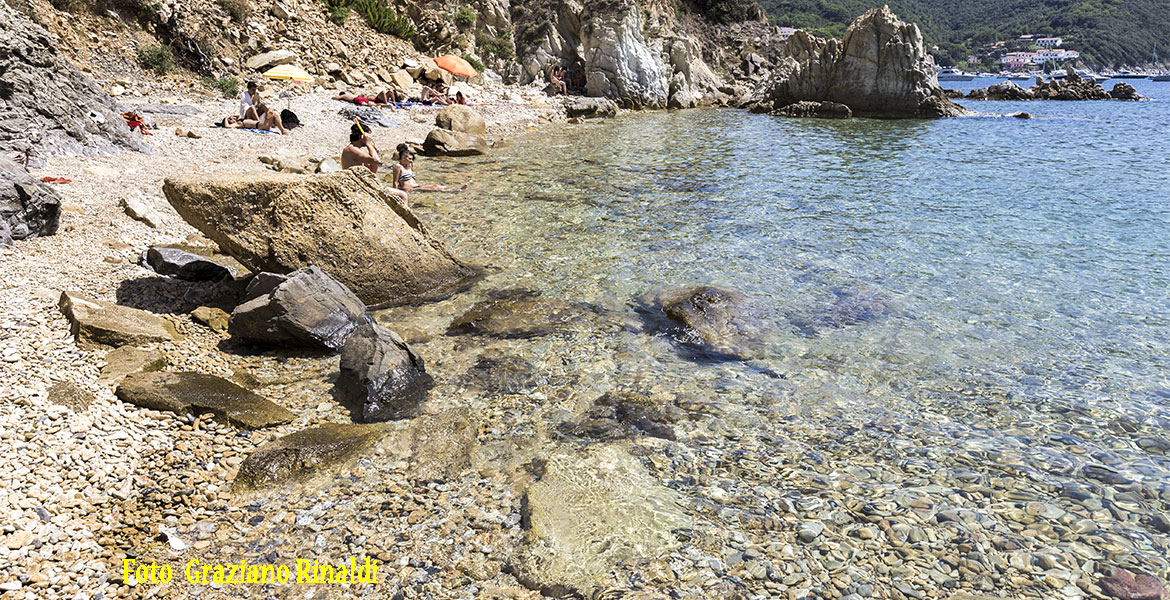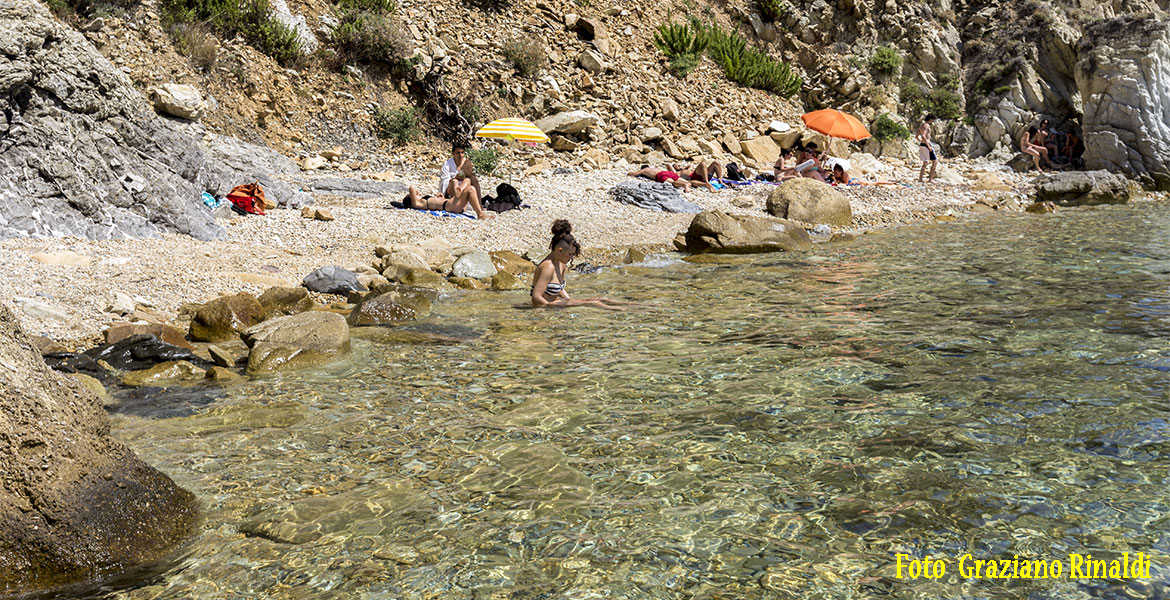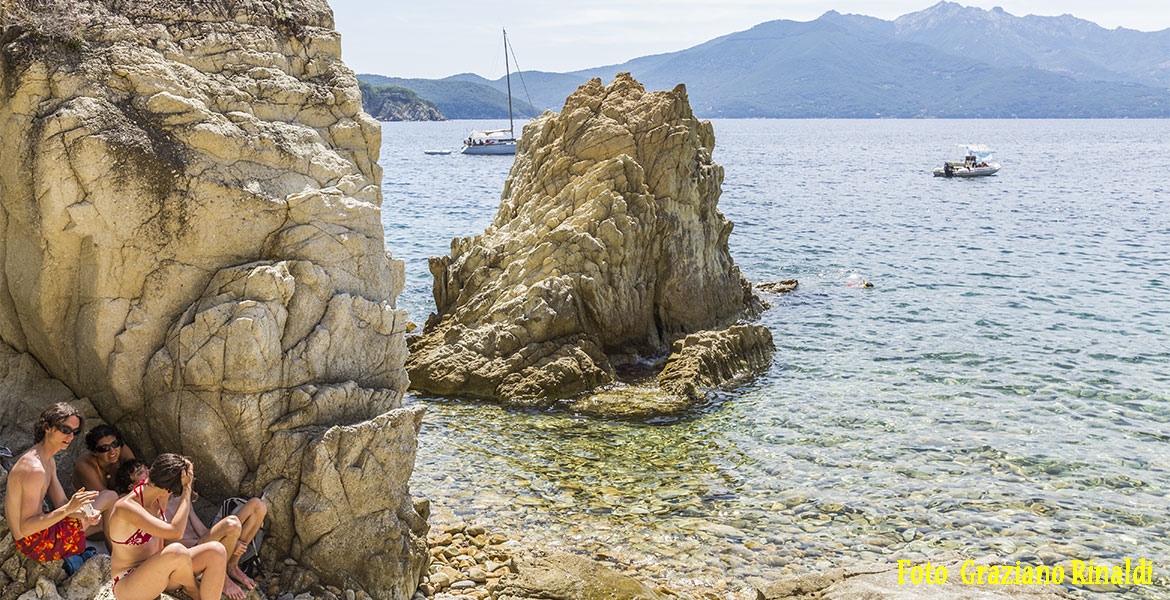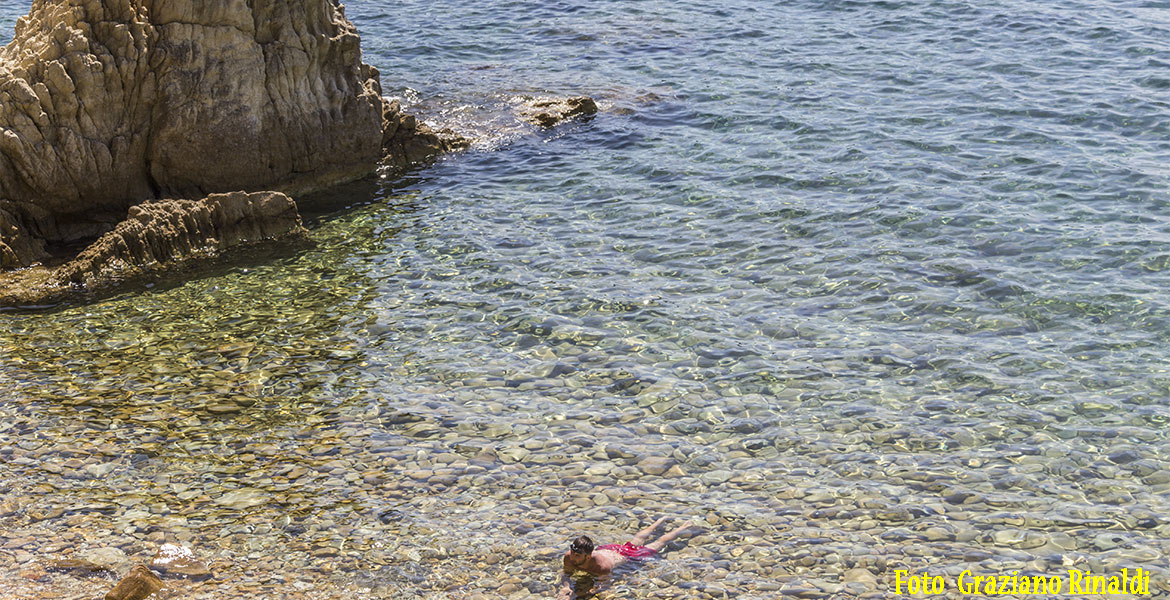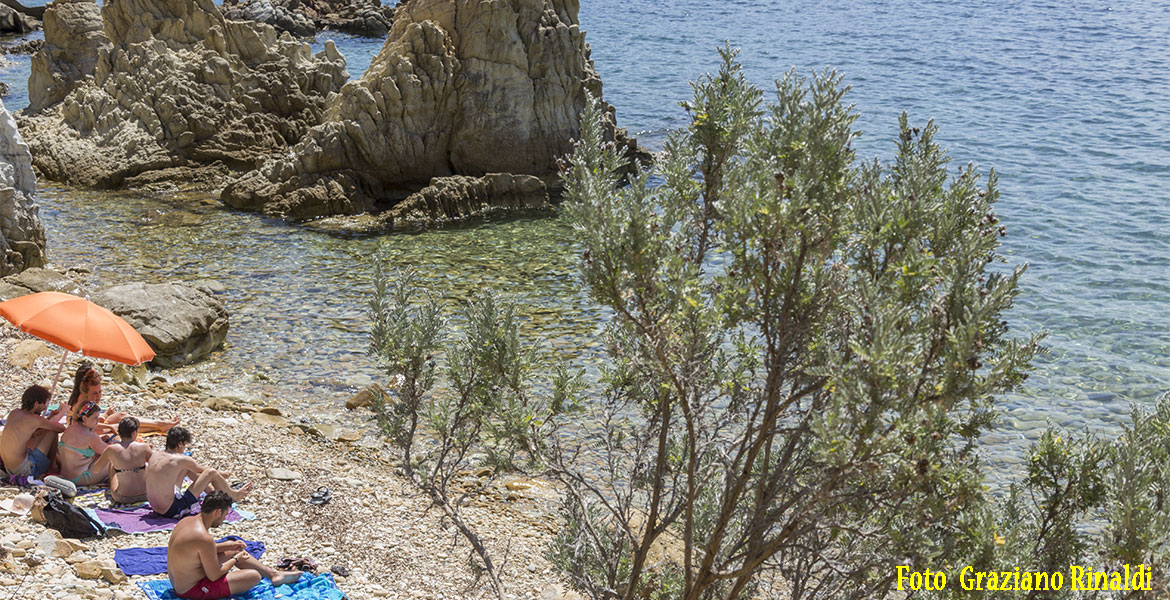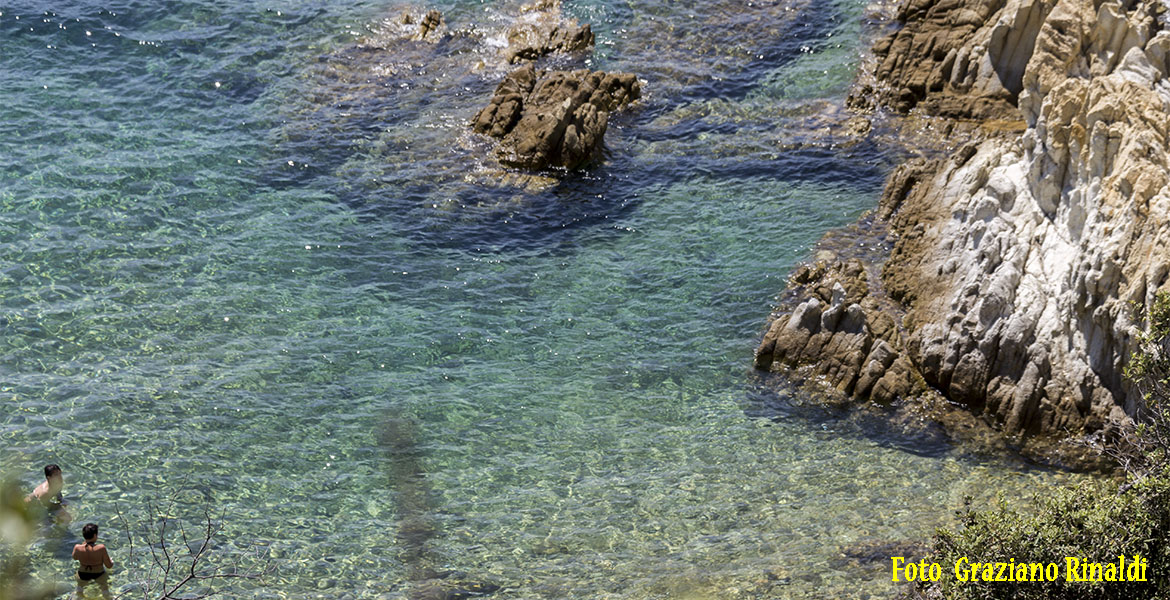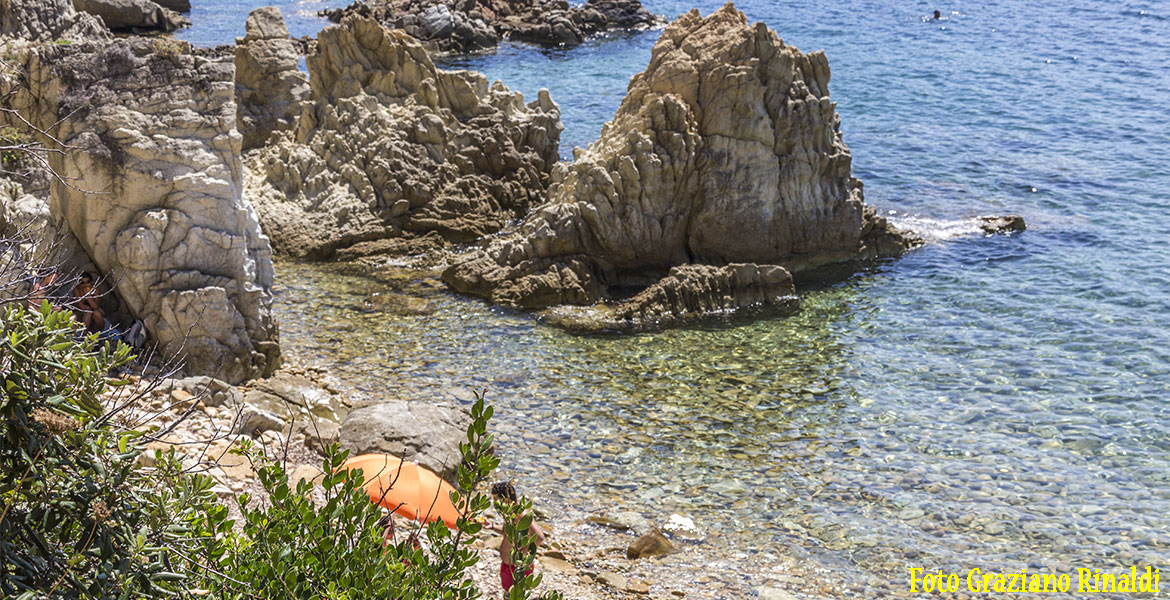We are talking about a few square meters of rather large stones which may not even be 50 meters long.
Yet this tiny cove, which I only learned the name of after swimming past it countless times, is much more popular than you might imagine, especially after I tell you how to get there!
The trail to it goes down from a part of the scenic main road (there’s no hope of finding a sign to direct you!), and drops down very steeply. The last part is also very broken up. Fortunately the path, which is actually narrow trail, is short (about 200 meters) and winds under the cool shade of pines and oaks. It would be easier to get there by swimming from the beach at Enfola, but if you need to bring things with you, you would have to use either a boat or walk down the “path”. At its most difficult point, a kind soul has tied a strong rope between the trees to help you go both downhill and up.
He has my thanks!
On arrival, you can begin to understand what drives so many people to engage in this difficult trek.
Though tiny, the beach is singularly hospitable-oddly enough for a place made of rocks and sea-but it feels … welcoming.
The impression is that it is on the shore of a beautiful lake, and the cliff holds and protects the shoreline as if between two powerful hands. Beyond the portion to the right (north) of the beach, the open sea is no longer visible and the front horizon is closed by the beautiful jagged profile of Mount Capanne. To one side, a recent landslide reinforces a certain sense of fragility about the place.
I wonder if you will have the same impression.
You will notice that the prevailing rock is granite with large clear crystals and vertical cracks. The rocks push into the sea, thereby creating cliffs with an extraordinary fluidity. Some rare dark rocks with white veins also emerge from the beach which are marl, or sludge fossils which tens of millions of years ago formed the ocean floor. Then Mount Capanne was formed and its magma slipped down into these parcels of rock and finally engulfed them. The white veins are evidence of ancient water seepage, containing white crystals of calcium that are deposited in the cracks of the rock.
The sea bottom consists of round stones which, strangely, do not present any difficulty for getting into the water as you might think at the outset; perhaps because of their smoothness and the fact that the bottom slopes gently and is always transparent-except when the Mistral provokes furious storms; but then the beach disappears.
With the Scirocco and the winds from the north, the water is absolutely transparent.
If I were to express the special charm of Pinetina in just a few words (and in my opinion its name is inappropriately reductive), I’d say … young. It seems that this corner of the island of Elba is still in development: unfinished and archaic together.
In my opinion, you can best experience it when, before reaching the shore by swimming, you give it a glance from the sea . Then it is like a fresh wound in the land, not yet healed by the vegetation, which brings up the cliff as a temporary shelter, where I like to imagine that until a century ago the young monk seals liked to indolently laze around in the sun..
By the way: in summer, the heat and the sun are relentless on Pinetina beach!

